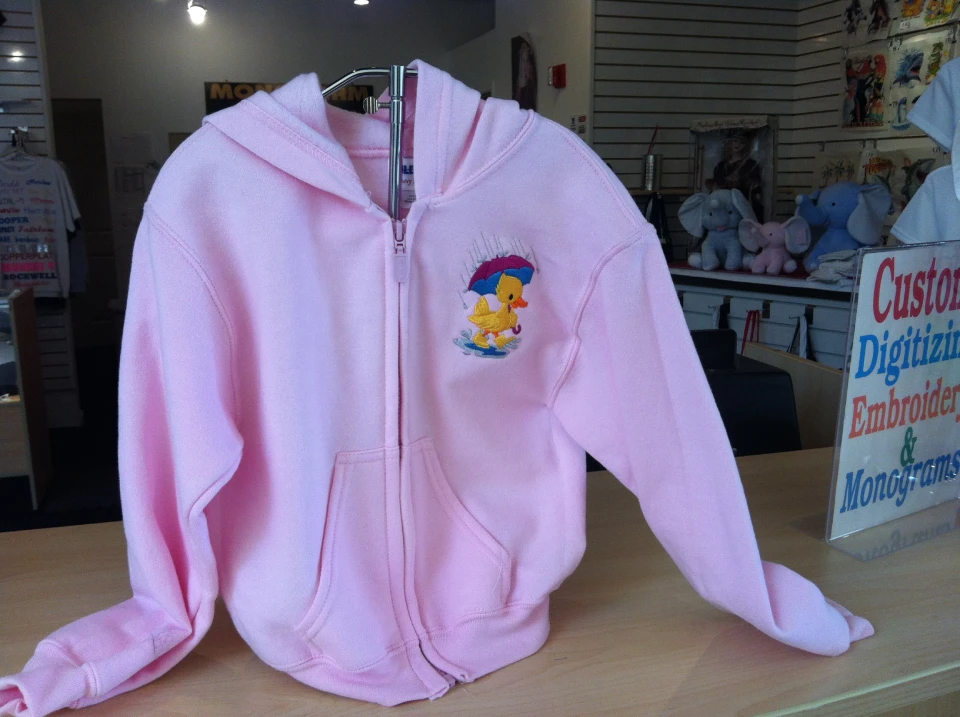The Art of Custom-made Needlework: Opening the Tricks to Creating Distinct and Remarkable Designs
Embroidery, a craft steeped in practice and virtuosity, holds within its detailed stitches the power to transform textile right into a canvas of distinct expression. The secrets to producing customized needlework styles that mesmerize the eye and leave a long lasting impact lie in a delicate balance of technique, creative thinking, and interest to detail. As we explore the world of personalized needlework, we uncover the nuanced interplay between thread option, sew complexity, and style personalization that elevates a simple garment to an artwork. Join us on a trip with the art of personalized embroidery as we unwind the enigmas behind crafting absolutely remarkable and distinctive creations.
Picking the Right Needlework Threads
When selecting needlework threads, what vital elements should you take into consideration to make certain the best outcomes for your personalized styles? The choice of embroidery thread is critical in establishing the final result of your embroidered style.
Moreover, the weight or thickness of the string plays a substantial duty in the appearance of the embroidery. Thicker threads can include dimension and texture to your style, while finer strings are optimal for intricate information and tiny message. Additionally, taking into consideration the shade fastness and washability of the string is important to make sure that your customized designs keep their top quality and vibrancy over time. By thoroughly assessing these factors and picking top notch strings that meet your particular requirements, you can improve the aesthetic charm and long life of your embroidered productions.
Exploring Various Stitch Strategies
To explore the realm of 'Checking out Various Stitch Techniques', one have to comprehend the complexities and nuances that each sewing approach gives the art of embroidery. Different stitch methods not only add aesthetic interest however likewise add to the total structure and dimension of the design. One preferred stitch strategy is the satin stitch, which entails carefully jam-packed parallel stitches to produce a smooth and shiny surface area, perfect for filling up in forms and developing strong outlines.
On the various other hand, the backstitch is a functional strategy frequently utilized for laying out and including great details. It involves sewing backward to develop a solid line of needlework. Furthermore, the French knot stitch adds a responsive element to layouts, best for producing distinctive accents like flower facilities or decorative touches.
Exploring various stitch strategies allows embroiderers to play with light, darkness, and depth within their designs, boosting the aesthetic allure and imaginative high quality of their embroidery projects. By grasping numerous sewing techniques, one can unlock limitless possibilities for creating one-of-a-kind and remarkable personalized embroidery items.
Incorporating Personalized Design Components
Having actually checked out the details of various stitch techniques such as the satin stitch, backstitch, and French knot, the focus now moves in the direction of including tailored layout components in customized embroidery tasks. Customized style aspects play an important duty in making embroidery tasks absolutely special and unforgettable.
One more way to include customized style components is by including signs or concepts that hold special definition to the recipient or reflect their passions and individuality. As an example, incorporating a favorite blossom, animal, or hobby-related sign can make the needlework layout more meaningful and individualized. Furthermore, choosing shades that resonate with the recipient or straighten with the intended style can better enhance the customization of the needlework task.
Mastering the Art of Shade Sychronisation

One key aspect of shade sychronisation is recognizing shade concept. This includes understanding how different shades engage with each other, the emotions they useful reference share, and just how they can be integrated to produce aesthetically attractive designs. By applying shade concept concepts, embroiderers can produce harmonious color combinations that improve the general appearance of the style.
Furthermore, taking note of contrast is essential in shade coordination. Making use of contrasting colors can assist particular elements of the design pop, enhance readability, and create an aesthetically vibrant embroidery item. By grasping the art of shade sychronisation, embroiderers can raise their layouts and create unforgettable pieces that reverberate with customers and visitors alike.
Enhancing Structure With Advanced Needlework Stitches
French knots, as an example, are perfect for adding little, increased dots to your style, imitating the appearance of beads or creating a textured surface. Bullion knots, on the other hand, can be used to develop twisted, ropelike aspects that include a lavish feel to the embroidery. Seed sewing entails tiny, scattered stitches that can fill out areas with a multicolor appearance, while turkey work creates cosy, dimensional accents reminiscent of pet hair or vegetation. Try out these advanced needlework stitches allows you to push the boundaries of conventional embroidery and develop truly one-of-a-kind important source and visually attractive textures in your layouts.
Verdict
To conclude, the art of custom-made embroidery entails a combination of selecting the right threads, checking out different stitch techniques, integrating tailored design elements, understanding color sychronisation, and improving structure with innovative stitches. By recognizing and executing these crucial elements, embroiderers can create one-of-a-kind and unforgettable layouts that showcase their creative thinking and ability. Embroidery enthusiasts can open the secrets to creating stunning and custom items that stand apart and leave a lasting impact.